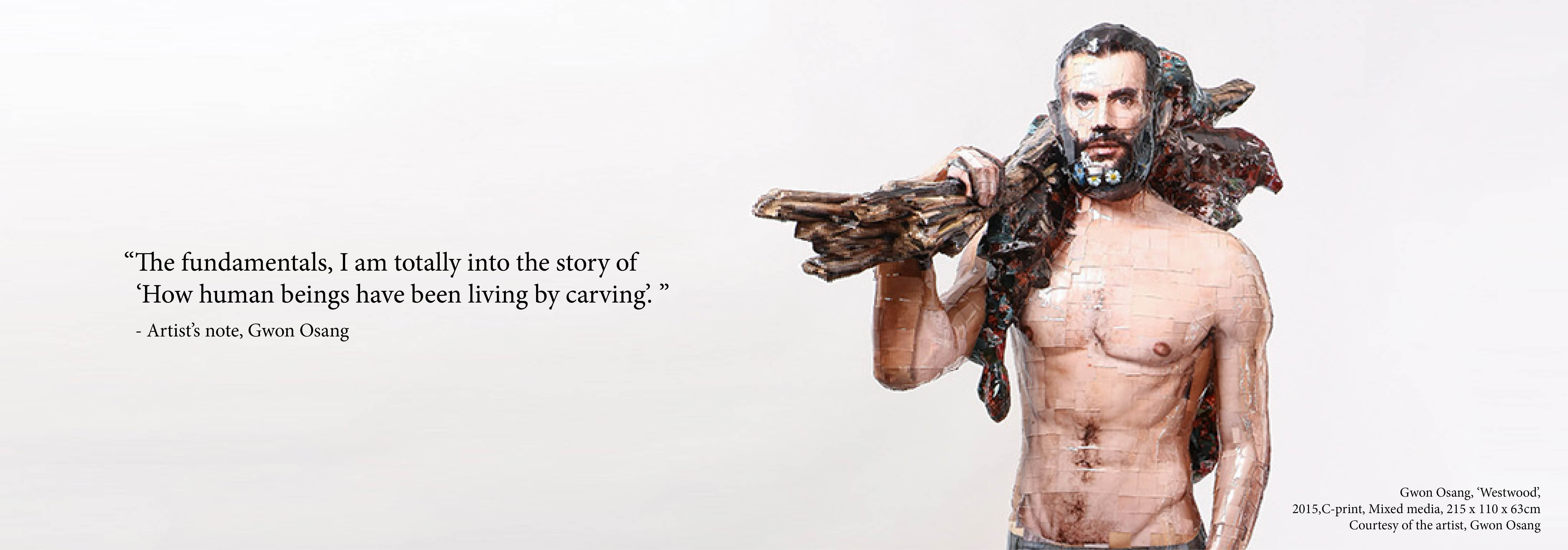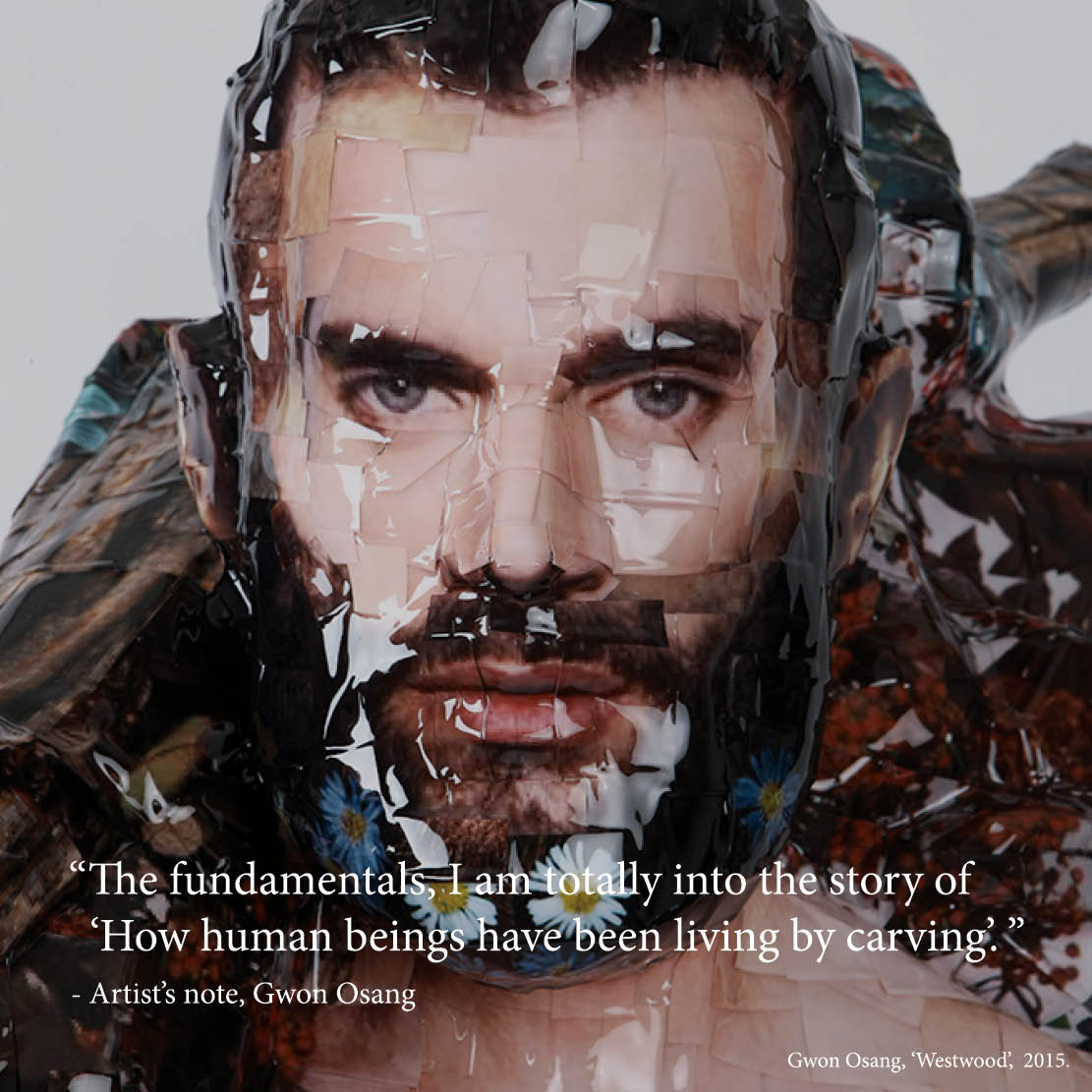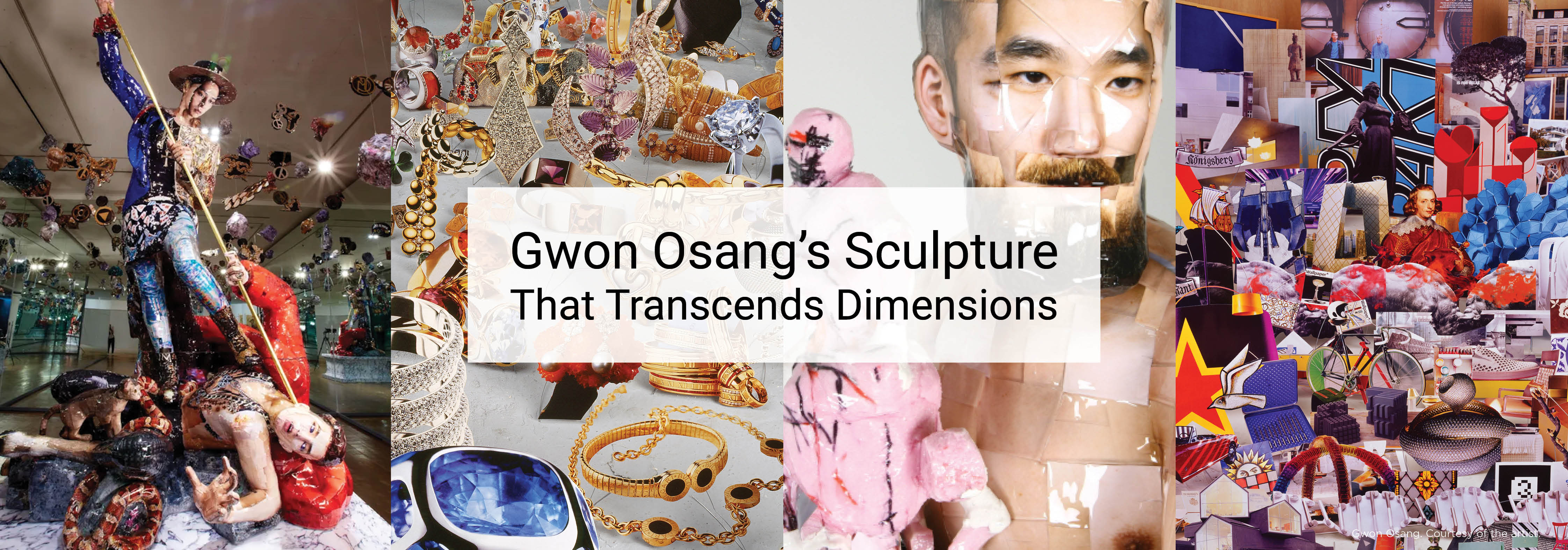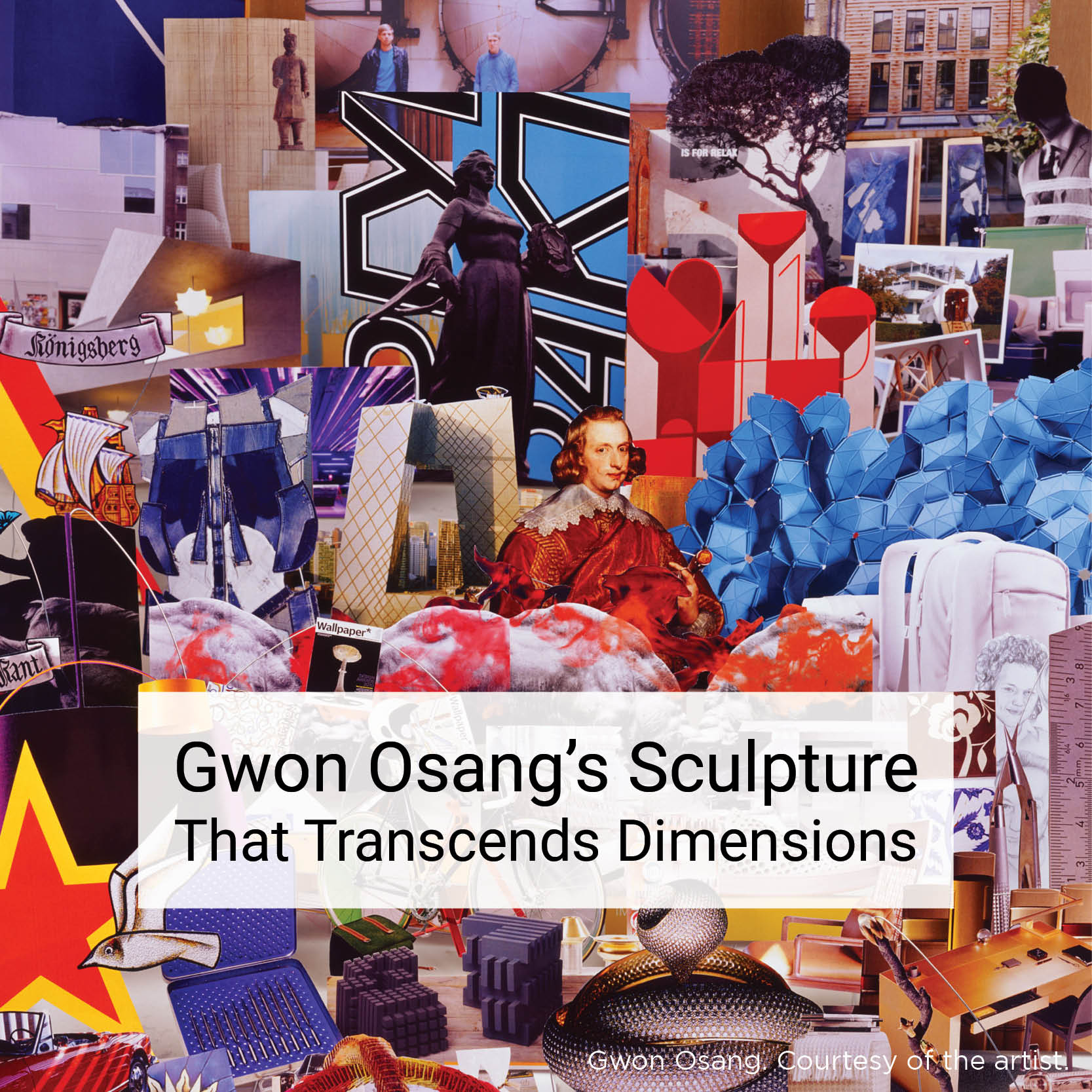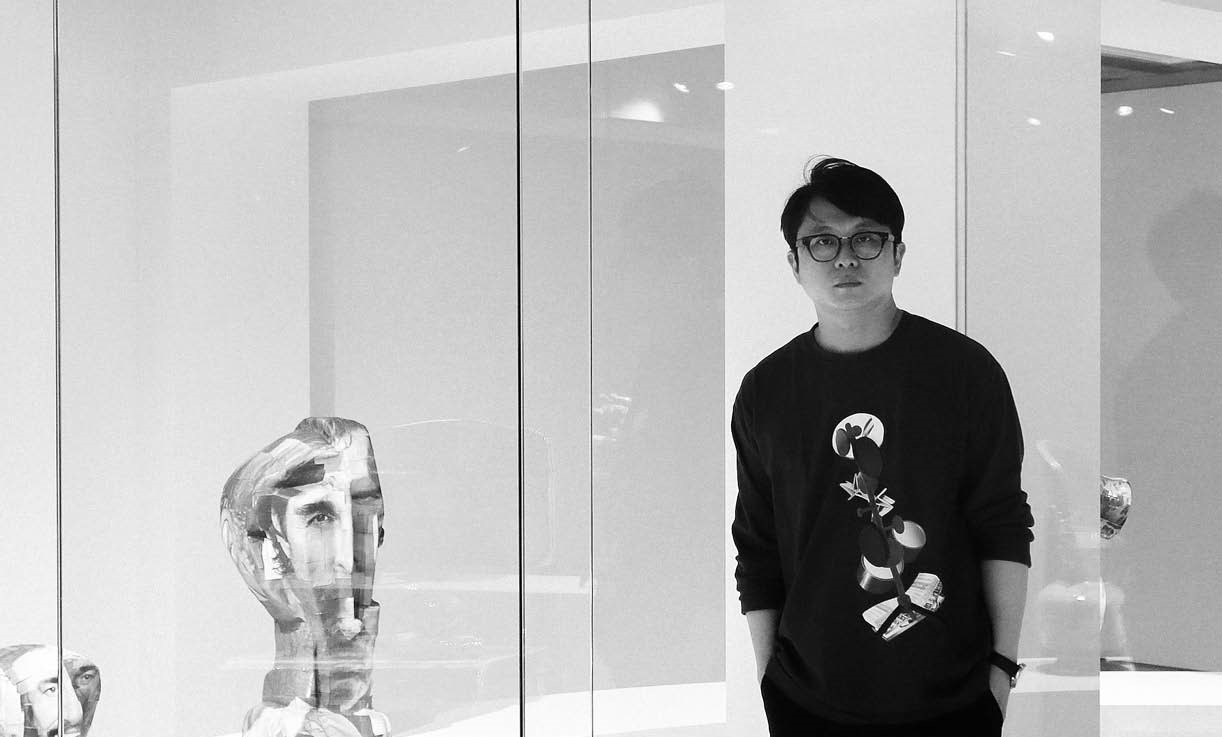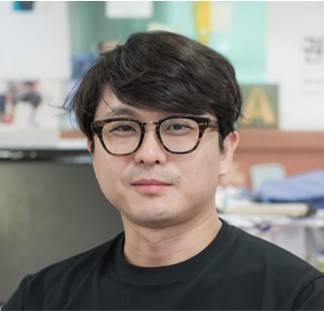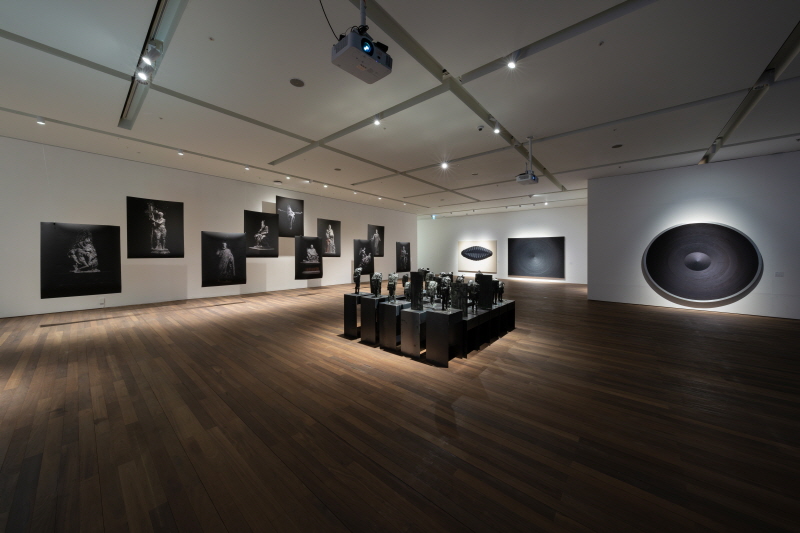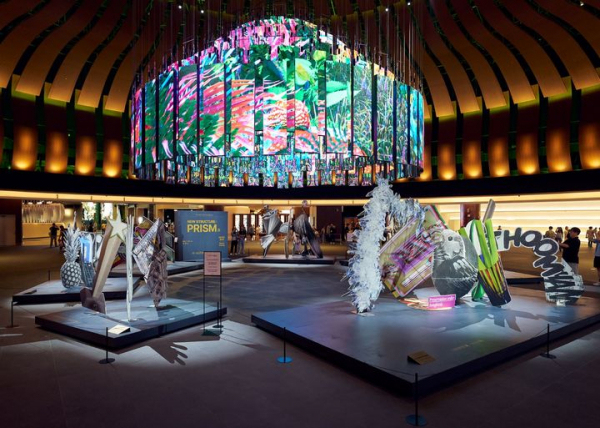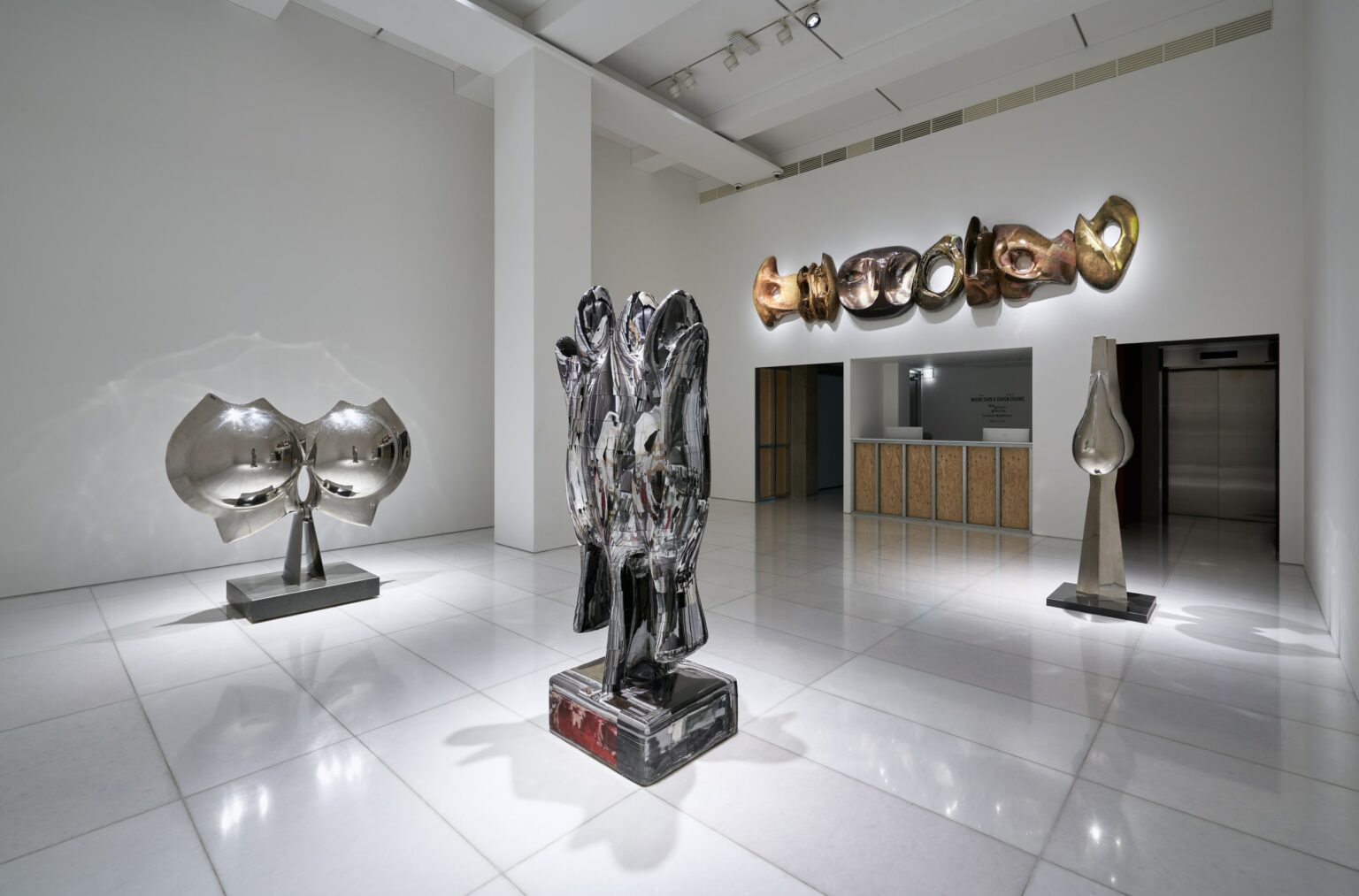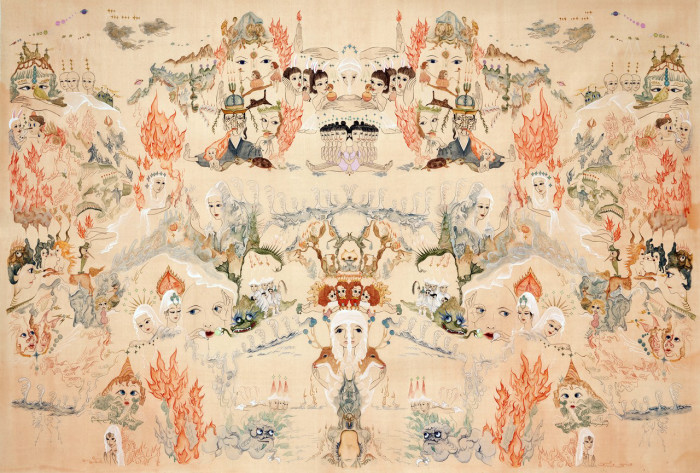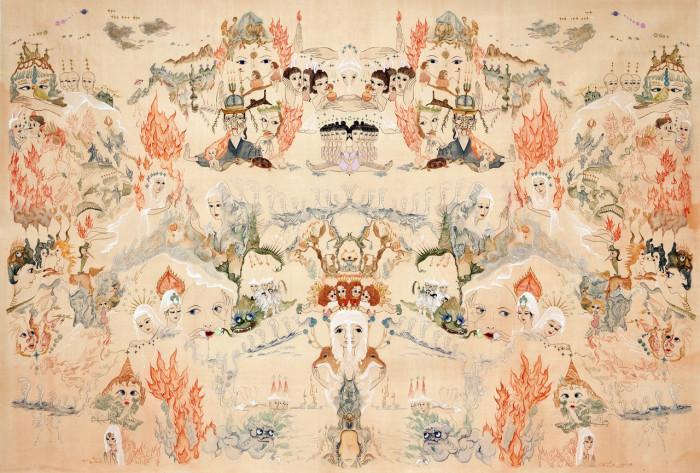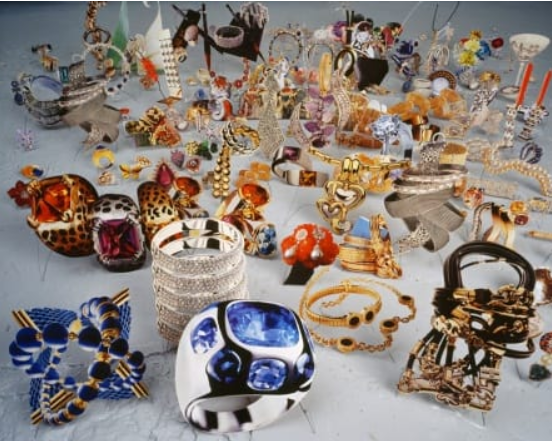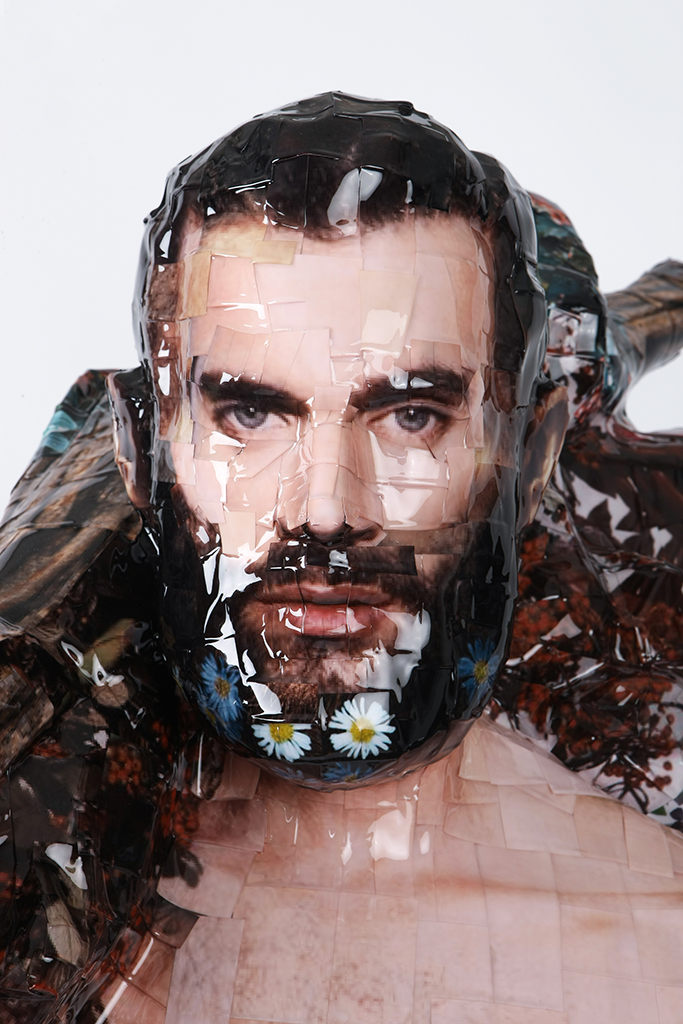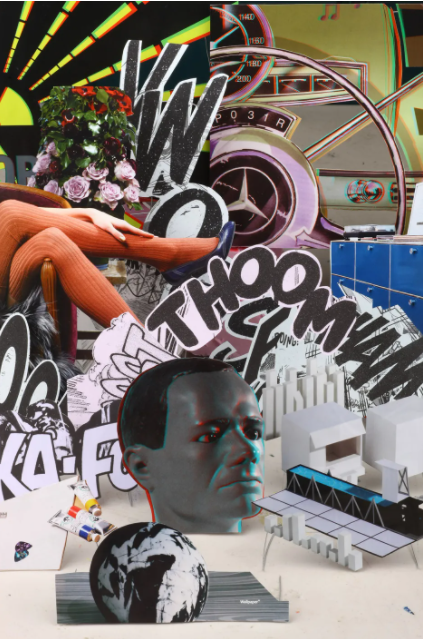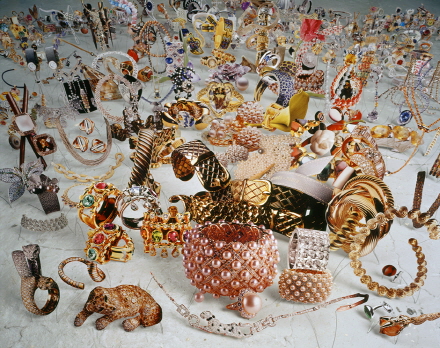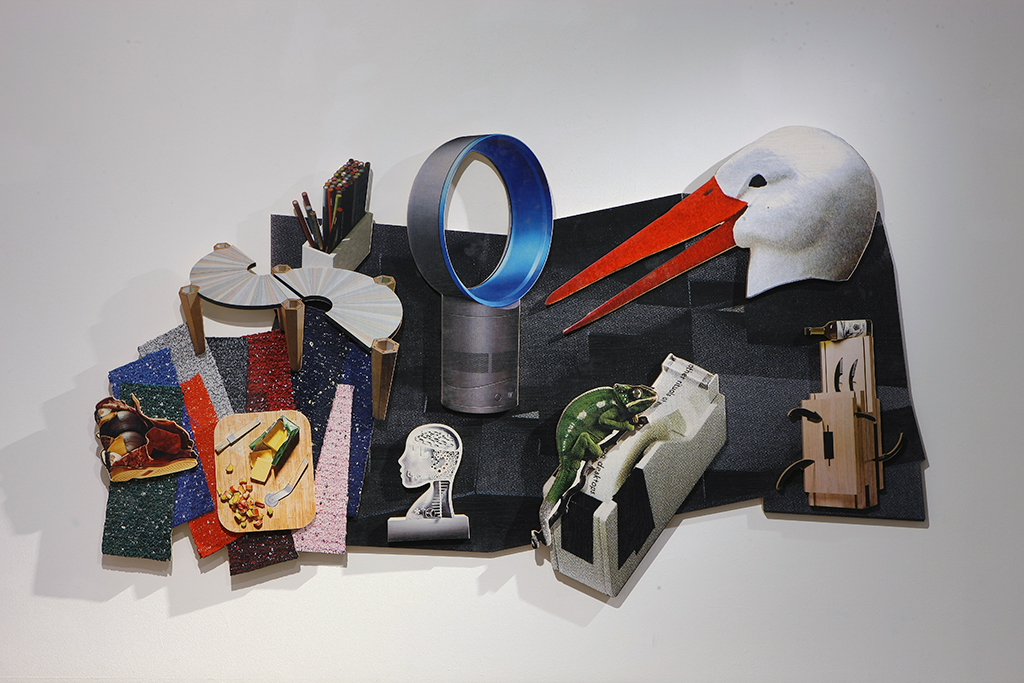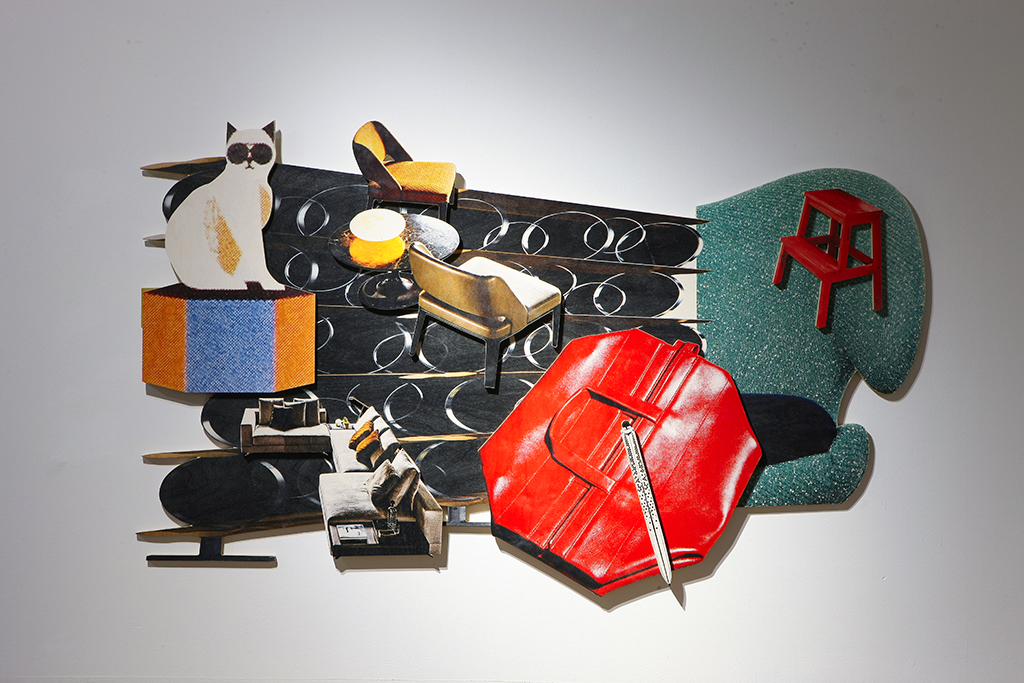Korean artist
Osang Gwon skillfully straddles the mediums of photography and sculpture in a
rich and complex signature style that seems to nod to Pop Art, traditional
still life painting and portraiture through a most contemporary vocabulary that
finds its roots in such far-flung philosophical underpinnings as the fractured
bodies of world history, the sutured surfaces of Dadaist collage and the mise en scène fabrications of the stage. And in hypothesizing
that Gwon’s work is staged in purely theatrical terms, one may view his
multilayered constructions as hybrid images that encapsulate both leading
role and backdrop under the unified rubric of vision, for we
indeed see a narrative unfold (and fold unto itself) before in space us as our
eyes skim the pieced-together skins and veneers of his most intellectual and
aesthetic endeavors. Put simply, Osang
Gwon redefines the ways our eyes understand that which normally plays out
before them; he mimics reality through restructuring it, at times making the
two-dimensional three and the three-dimensional two, and all the while allowing
the cracks of his labor to show.
Indeed, restructuring the collective vision of a
given time and place is nothing new to the history of art. The Impressionists
re-envisioned the reality of an ever-accelerating society as laid out by the
Industrial Revolution and its churning motors that forever instilled a blurring
speed to the landscape as viewed from a chugging locomotive’s compartments. The
Dadaists forced their audiences to revel in the mundane and the absurd, to in
fact redefine both visually and theoretically what value an ascribed
work of art, often in the form of a ready-made object or pieced together
collage, would hold once presented as such.
Further, the Surrealists created landscapes of the far reaches of the
mind, environs of pure whimsy and decay that could never exist in reality, yet
that fully reflected the war-stricken nature of the moment. Decades later, the Abstract Expressionists
boiled the act of making art down to rhythmic gesture and the unconscious mind;
no longer was it necessary for art to be figurative or representative—now the
motions and emotions of paint itself were enough to hold muster, and indeed to
take over all that preceded it. Still
yet, Pop Art, Minimalism and the dozens of other artistic movements that have
arisen over the past 50 years all in their own way reordered our collective
vision. Yet again, and in a truly novel light, Osang Gwon has combined aspects
of nearly all of the above-noted “isms” of art history into a personal style
that relies on the canon, just as much as it rewrites, challenges and
undermines it in equal measure.
And although his work is not easily categorized
under the overarching headings of Photography or Sculpture, it somehow lives
between the two, simultaneously inhabiting and being the crack
which divides these powerhouse monikers of the house of art. Returning to the
theatrical base of Gwon’s work, it might best be said that, as in his much
discussed “Deodorant Type” series, he creates actors upon a stage (here the
gallery) in pieced-together photographic constructs in an attempt to develop a
slightly “off” character that is positioned well beyond the core demeanor of
his very real models that he shoots from head to toe in a deeply intimate
photographic exploration of the entire human form and all of its decorative
trappings. Both literally and figuratively, Gwon builds his characters
from scratch, picture by picture, as though a modern day Dr. Frankenstein
hell-bent on creating new life from whence there was none. The developed paper
upon which a graft of skin here or a swatch of fabric there is captured becomes
the basic building block with which Gwon endeavors to recreate life, yet
certainly not in its original form. The collage work of Claude Cahun from the
1930s certainly comes to mind, set as she was on giving birth to alternate
bodies in her work, all to subvert the status quo. And yet Osang Gwon jettisons attempts at
subversion in favor of critique; for him, the actors which he births into the
reified realm of art are everyman, the common shopper in one case, a
pensive woman in another. By serving up that which is supposed to be
commonplace, and yet scarred and clearly not natural, he urges the
viewer to realize that life and all of its social components—from the clothes
we wear, the things we buy and the way we hold ourselves—are social constructs
which are learned, dedicated to memory and re-performed on a daily basis. In
fact, the title of the series comes from Gwon’s fascination with the marketing
of Western deodorants in Asia, a place where only a small fraction of the
population has a problem with body odor. Deodorant, then, is out of place in
Asia, even though it is readily available. Extending this further, he thus
makes us question the skin we are in, both canonizing and critiquing the au
currant aspects of life—force-fed as they are—in the early 21st-century.
Fashion certainly plays a primary role in Gwon’s
production, but his work is not simply an attempt to provide a glimpse of urban
street style. Politics, too, I would venture, is at play here. Thanks to the
ever-present fissures and seams that mark the points of contact between the
hundreds of photographs that compose his figures’ corporeal forms, an
ever-present sense of violence and trauma is embedded in the glossy veneers of
Gwon’s actors. And certainly the notions of war, terrorism and global security
are nothing new to us, embroiled as our current world is in conflict and
military maneuvers. Whether it be the reality of broken bodies on the field of
combat, or those in the midst of our urban centers when a terrorist’s bomb
maims, imagery of broken bodies has become standard issue in mainstream
news outlets, and unfortunately on a near daily basis. By literally presenting scarred forms that
seem to have been pieced back together again a la Humpty Dumpty or Shelley’s
famed monster, Osang Gwon both acknowledges the lived tragedies of our times
and provides hope that things might one day get better and come back to some
(albeit imperfect) sense of normalcy.
Gwon’s critical stance on vision and materiality
also plays out in his series “The Flat.” With imagery culled from the
editorials and advertisements of high-end fashion magazines, Gwon creates an
apparently flat wall of luxury repeatedly throughout the series. Whether
it be fabulously expensive watches, luxury perfumes and creams, or jewels and
baubles of exorbitant cost, works in “The Flat” become fields of
consumerism writ large as the entire picture plane becomes completely populated
with the markers of excess and brand-name logos. This is of course nothing new
in an age where contemporary artists like Japanese wunderkind Takashi Murakami
and American art star Richard Prince help the venerable French luxury retailer
Louis Vuitton sell its high-priced purses with their much-sought-after
designs. Yet, Osang Gwon is not
interested in creating new motifs for commercial applications; it is the
products themselves that he takes up to address the sheer saturation of
life today with brand logos and must-have accessories. And although his
photographs appear to be collaged assemblages of all-out consumption, they are
actually sculptures first and foremost.
For, in fact, Gwon creates stand-up cut-outs of each item—blown up to
super-size—and arranges them in a large space in his studio, stretching out and
back several feet in all directions. By placing the camera directly in front of
and on the same level as his constructed sea of conspicuous consumption, Gwon
achieves a flat picture where all products appear to be on the same plane, when
in fact they originally occupied a variety of positions and sizes in real
space. Again, Gwon subverts our known reference points to visually accessing
imagery, forcing us to question that before our eyes. As a critique of the upper echelons of the
retail world, “The Flat” series might inspire us to think twice about spending
too much on the latest fad, or in some cases might compel us to dive right in
and buy, such is the sheer beauty of the glowing bounty contained within. Yet,
and more importantly, the series makes us question the concept of materiality
itself; both in terms of the materials from which a work of art are made
as well as the materialism of life in the world today. Osang Gwon serves
up this series in the language of advertisements and display; the way we
choose to read it is purely individual and based primarily on our own
predilections—and spending habits.
As discussed earlier, Gwon’s work somehow
presents objects as both primary actors and prime components of the sets
upon which they play. Especially with “The Flat” series, individual items may
populate the picture-sculpture, but taken together, they become pure wallpaper,
a stage set of all-out glitz. In much the same vein, characters in the
“Deodorant Type” series may appear to be stand-alone identities, but thanks to
the very nature of their piecemeal construction they ultimately appear
arranged, as though they are carefully thought-out backdrops against which
living and breathing bodies (i.e. the viewer) might play out their own actions.
It seems then that Gwon is very aware of the interactions that his
viewers will inevitably have with his work, whether fantasizing about being
broken down component by component and then being rebuilt, or being set adrift
on a window-shopping spree that can only result in the purchase of art, not the
cardboard shells of haute culture/couture from which they are made.
And in the end, we must realize, especially in
today’s markets where art prices continue their upward climb, that in almost
all aspects of life, our vision, and by extension, our judgment, often has
strings (with price tags) attached. Osang Gwon is fully aware of this
unavoidable component of the contemporary art world, and in his quest for
describing and redefining the materiality of art, he inevitably reformulates
the ways in which we see it. Indeed, in his series “The Sculpture,” he
once again undermines our gaze by presenting us with luxury cars and their
motors served up in candy-coated Technicolor, when in fact these very
plastic-looking models are actually made from bronze which is then painted over
with bursting hues. For example, The Sculpture 5 (2005) is a life-size
bright orange Lamborghini that seems to still be wet thanks to its
glistening—and lumpy, as in freshly modeled—surface. Only when the
viewer reads the label or sneaks a touch does she realize that the car is in
fact made from the most traditional of high art sculptural materials, bronze. Here
too, Osong Gwon throws us a conceptual curve ball, tricking our eyes to believe
one thing, when, in actuality, something quite the opposite is true.
Thus thinking about Gwon’s work and all of its
exquisite complexity, only a small portion of which I discussed above, it might
be best to catalogue his work under the more apt concept of the manifold
in lieu of such terminology as Photography or Sculpture. For in physics, the
manifold is best described as that which allows complicated structures to be
understood through simpler more common-place spaces. And that is exactly
what Osang Gwon is attempting to do in his work, folding, manipulating and
displaying a litany of complicated concepts as far-ranging as history,
economics, materiality and human nature in a universal container that both
mimics, and yet always and forever subverts, that which we think, or thought,
we knew as truth. And in so doing, like the innovators who came before him,
Osang Gwon gives us a new way of seeing, and indeed of knowing, the world
around us.
Eric C. Shiner is an independent curator and art historian specializing in Asian contemporary art. His scholarly focus is on the concept of bodily transformation in postwar Japanese photography, painting and performance art. Shiner was an assistant curator of the Yokohama Triennale 2001, Japan's first ever large-scale exhibition of international contemporary art, the curator of Making a Home: Japanese Contemporary Artists in New York at Japan Society in 2007 and the co-curator of the exhibition Simulasian at the inaugural Asian Contemporary Art Fair, New York in November 2007. He is an active writer and translator, a contributing editor for Art AsiaPacific magazine, and an adjunct professor of Asian art history at Cooper Union, Pace University and Stony Brook University.



